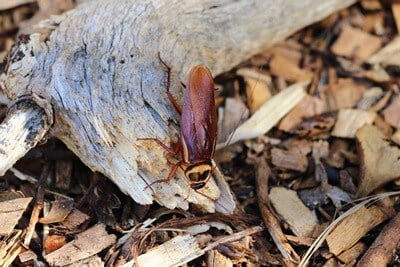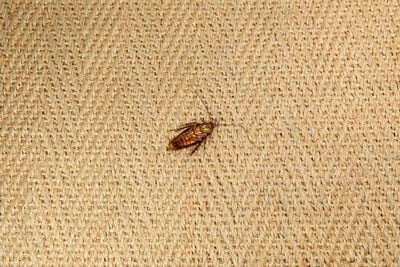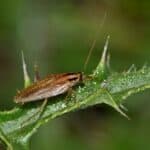Several cockroach species prefer to live underground or under debris. This allows them to avoid detection from predators or other dangers. Many cockroaches dislike the light, so living underground enables them to hibernate until the sun goes down, which is when they forage for food.
Some cockroach species burrow underground. Giant burrowing cockroaches create permanent underground burrows in the compacted sands of Australian forests. Surinam cockroaches also burrow underground, digging into both soil and sand. Other roaches prefer to live under leaf debris, mulch, and rotting wood where it’s humid and moist. They don’t burrow, but they make use of the resources available to protect themselves.
You might think that you’re safe from cockroaches that prefer to live underground. Unfortunately, some species still enter your home for food, especially in urban areas where there is more opportunity to find food and water.
Do Cockroaches Live In the Ground?
Surinam and giant burrowing cockroaches are known to live into the ground. Other cockroaches live above ground but create habitats in a wide range of outdoor environments. Roaches aren’t picky about where they live, as long as they have access to the essential things they need to survive, including:
- Food
- Water
- Warmth
- Shelter
When cockroaches live outside, they choose to live either underneath or amongst materials that offer protection, moisture, and warmth, such as:
- Wood piles
- Leaf piles
- Flowerbeds
- Garbage cans
- Compost piles
- Amongst piles of organic debris
- Inside tree holes
Cockroaches also live underground in sewers and drains, feeding off the moisture and residue that builds up. Not only do sewers and drains offer easy access to homes, but they’re unsanitary, quiet, and protected from predators – three things cockroaches thrive in.
Do Cockroaches Dig Underground?
As mentioned, only Surinam and giant burrowing cockroaches physically dig underground. Surinam cockroaches, which are some of the most common burrowing cockroaches, dig approximately 3-4 inches into sand and soil. Giant burrowing cockroaches burrow as deep as one meter into the ground, which is deep enough to protect them from everyday dangers and birth their young.
Do Cockroaches Live In Soil?
Cockroaches don’t only bury into dirt and soil, but they also dig into sand, where they create underground burrows. They come out to forage for food, bringing it down to the chamber for the rest of the colony to eat. This is one of the reasons why they don’t invade homes – they have everything they need in their natural habitat.
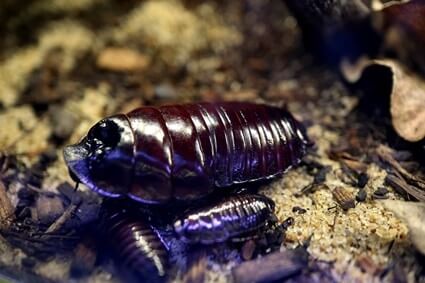
Do Oriental Cockroaches Burrow?
Oriental cockroaches prefer to live outside where it’s damp and humid. They don’t burrow into the ground like some other cockroaches species, but they’re often found hiding under:
- Debris
- Mulch beds
- Stones
- Leaf piles
When conditions become too wet or too dry outdoors, oriental cockroaches move into homes through crawlspaces and wall voids and under porches and door entry points. They congregate towards basements, kitchens, and bathrooms. They also crawl around:
- Sinks
- Bathtubs
- Radiators
- Ducts
- Pipes
Oriental cockroaches are attracted to water because they need more of it than other cockroach species.
Do Hissing Cockroaches Burrow?
According to the College of Agriculture, Food and Environment, little is known about the Madagascar hissing cockroach’s ecology, but it’s thought that the insect lives on the forest floors of Madagascar in rotten logs and tree holes, crawling amongst branches, fallen leaves, and decaying plant matter while feeding off fallen fruit.
The Oklahoma State University explains how Madagascar hissing cockroaches are negatively phototactic – they move away from the light and are naturally nocturnal, preferring dark, moist, secluded environments. In captivity, they need wood chips, moist peat, or sphagnum moss to burrow into in order to hide from the light.
The good news for homeowners is that Madagascar hissing cockroaches rarely enter human dwellings because they’re not attracted to light. Instead, they have everything they need in their natural environment.
Do Surinam Cockroaches Burrow?
Surinam cockroaches burrow into both soil and sand. They prefer to live in dark, moist areas, so underground nests protect them from predators. As burrowing insects, they live almost exclusively in soil and are commonly found in gardens.
Surinam cockroaches burrow approximately 3-4 inches underground, forming a burrow for nymphs and females incubating the egg capsules. They feed off plant stems and roots, destroying plants in the process. You can also find them living within:
- Rocks
- Compost piles
- Rotten branches
- Trash bags
- Wood piles
- Lawn thatches
- Houseplants
- General debris
Even though Surinam cockroaches aren’t a common household pest, they can get into homes through plants. If homeowners water their plants outside and a cockroach manages to crawl into the soil, they’re at risk of unwittingly bringing the cockroach into their home.
Where Do Giant Burrowing Cockroaches Live?
According to the Museum of Tropical Queensland, giant burrowing cockroaches, also known as rhinoceros cockroaches, are native to Australia and live in permanent underground burrows in the compacted sands northeast Australian forests where the females care for their young.
Male giant burrowing cockroaches have a more indented shape at the front of their thorax than females, which they use as a shovel. They use their spiny, stout legs to dig meter-deep burrows into the soil, building a chamber at the end for females to bear their young. They go to the surface at night, foraging for dry leaves to eat, taking some down to the chamber.
Signs of Burrowing Cockroaches
It’s not uncommon to experience cockroach infestation in your garden, but it can be hard to spot. If you think you have an infestation in your yard or within the boundaries of your property, look out for the following signs:
Plant Damage
When cockroaches dig their nests or forage for food, they’ll upturn flowers and dig out the roots from the soil. The damage should be visibly apparent. Your soil will look displaced and messy, and plants may look different from before they were disturbed.
Bite Marks
Not all cockroaches eat plants. However, if there’s no other food source available, they will eat anything, including the roots, leaves, and flowers, to survive. Cockroaches are particularly partial to greenery that’s dying or decaying.
Damage to plants, flowers, and shrubs is a common sign that roaches have been feasting on them. Look out for minor nibble marks or tears. However, these marks will be small and hard to spot, so you’ll need to take a closer look.
Holes in Soil
Burrowing cockroaches leave small holes in the soil that act as entry and exit points to the nest. You can tell if cockroaches have burrowed into the soil by gauging the size of the holes and taking notice of the number of holes that are apparent within the soil.
Healthy Plants Dying
If once-healthy plants suddenly start dying, roaches may have burrowed into the roots, killing them. Some cockroaches also disrupt the soil’s PH balance, preventing flowers and plants from getting the nutrition they need. Similarly, plants that need lots of moisture to survive will struggle to stay alive if roaches take the water supply.
There’s a good chance that roaches are the cause of the unexplained death of plants and flowers. You can use chemicals to stop roaches from burrowing into your plants, but be careful only to use pesticides that only kill pests, not plants. Diatomaceous earth is a safer, more gentle option.
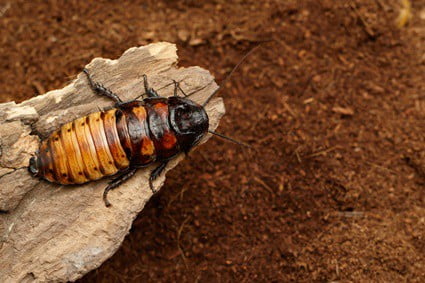
Bad Odors
Roaches produce musty smells that get worse over time. As noted by Biological Sciences, cockroaches communicate with each other through pheromones. These pheromones guide other roaches to shelter and warn them of nearby dangers.
Cockroaches store uric acid in their fat for recycling. When they’re killed, they release a foul-smelling odor that warns other roaches to stay away. Even if they die naturally, they’ll rot, eventually causing an unpleasant odor. If you notice an inexplainable foul smell in your soil, dead cockroaches are likely hidden beneath the ground.
How To Prevent Cockroaches From Burrowing
To prevent a cockroach infestation in your garden or outside your home, you’ll need to remove anything they can hide under. If you have soil and plants in the garden, there’s only so much you can do, but you can make your outdoor space as inhabitable as possible by:
- Removing excessive leaf litter, mulch, and stones away from the foundations of your home.
- Checking wood piles for signs of roaches, moving them to a secure location. Cockroaches will eat decaying wood.
- Making sure compost piles are stored in a waste bin with a lid.
- Sealing exterior cracks on patio areas and the exterior walls of your house.
If you find cockroaches have burrowed into soil, put diatomaceous earth around the areas that the roaches have burrowed. This non-toxic substance kills cockroaches by scratching their exoskeletons and absorbing essential oils, fatally dehydrating them. The powder washes it away in the rain. You can also get rid of it yourself by washing it with a watering can or hose.
Cockroaches that burrow into the ground are rarely a problem for homeowners. It’s better to have them outside in your yard than in your house, but it’s good to monitor the situation to ensure your plants aren’t at risk of dying.
